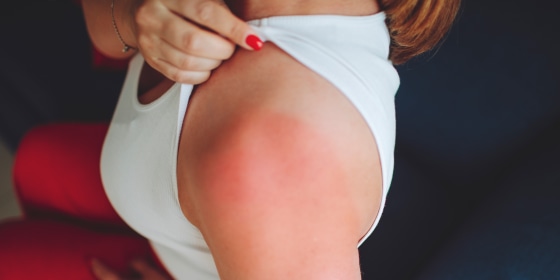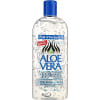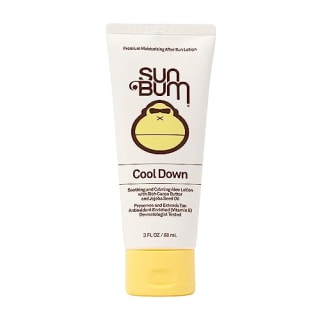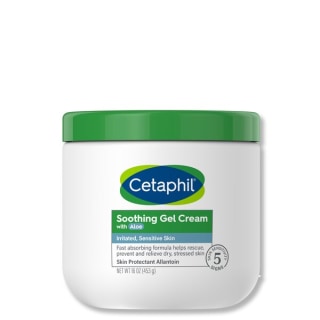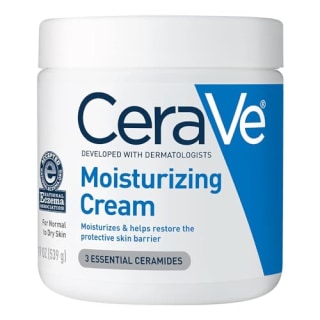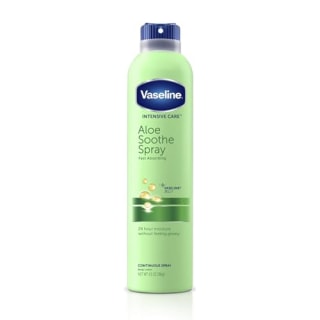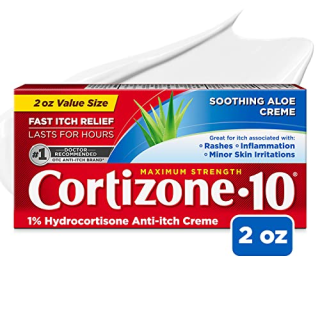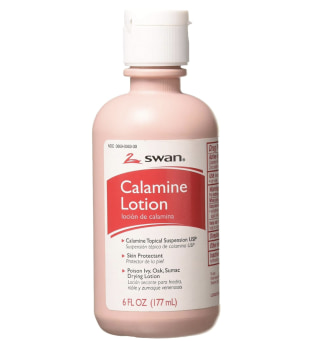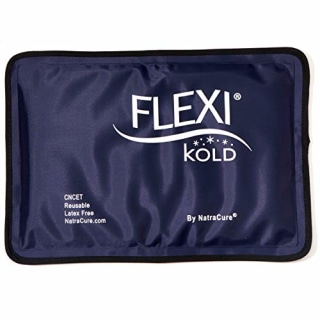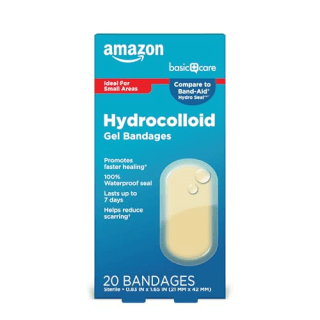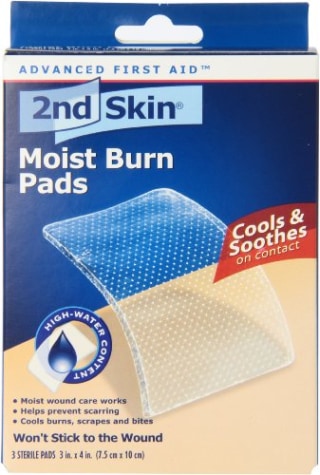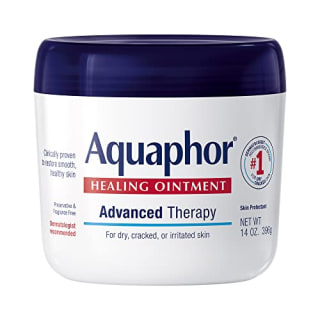Even when you wear sunscreen and UPF clothing, sunburns happen. Some are mild and give skin a pink tint, while others are more severe and may even blister. Regardless, sunburns are uncomfortable, but plenty of over-the-counter products quickly soothe skin and encourage healing.
I talked to dermatologists about the best sunburn treatments you can buy and how to know when to see a doctor. I also rounded up their favorite sunburn treatments, like aloe vera gel, moisturizer and anti-itch cream.
Want more from NBC Select? Sign up for our newsletter, The Selection, and shop smarter.
How I picked the best sunburn treatments
Dermatologists recommend thinking about the following factors when shopping for sunburn treatments:
- Sunburn severity: How to treat your sunburn depends on its severity and whether there’s blistering, as well as signs of a secondary infection like pus, drainage, fever or chills, says Dr. Michael C. Cameron, a board-certified dermatologist and assistant clinical professor of dermatology at Mount Sinai’s Icahn School of Medicine. It’s best to apply a thick moisturizer to irritated areas for most mild sunburns and drink plenty of water, says Dr. Michele Farber, a board-certified dermatologist at Schweiger Dermatology Group. She recommends aloe vera and cool baths to calm sunburned skin, and Cameron suggests taking ibuprofen to reduce swelling, redness and pain. However, deeper burns may require a doctor’s visit and more aggressive treatment. For example, a prescription-strength silver sulfadiazine topical cream is commonly given to patients with more severe burns, says Dr. Mary Stevenson, a board-certified dermatologist and assistant professor at NYU Langone Health’s Ronald O. Perelman Department of Dermatology.
- Your symptoms: These determine what type of over-the-counter products are right for you, like those that target pain or itching.
- Ingredients: If you’re buying a topical treatment like a cream or ointment, experts recommend avoiding those made with fragrances and alcohols, which may cause further irritation, especially if you have sensitive skin. Prioritize mild options made with soothing, hydrating ingredients like aloe vera, soy and calamine, says Dr. William Huang, a board-certified dermatologist and adjunct professor of dermatology at Duke University.
The best sunburn treatments
Using dermatologists’ guidance, I rounded up over-the-counter products you can use to treat sunburns. Experts say it’s crucial to stay hydrated while recovering from a sunburn, so be sure to drink plenty of water. If your sunburn is severe or you feel ill, be sure to see a medical expert for further treatment.
All of the experts I talked with recommend treating sunburns with aloe vera, an ingredient known for its cooling, soothing and moisturizing properties. You can use Fruit of the Earth’s aloe vera gel on your face and body, and it dries clear once you rub it into skin. The gel is free from fragrance, alcohols and added color.
If you don’t like the feeling of a gel, brands also offer aloe vera lotions like this one from Sun Bum. As aloe soothes skin, the lotion’s cocoa butter and vitamin E hydrate it to further promote healing. The lotion has a lightweight, non-greasy feel.
Stevenson prefers treating sunburns with creams that are typically sold in a pot, rather than lotions sold in a squeezy or pump bottle. Creams are thicker and more moisturizing than lotions, making them better for dry, inflamed skin, she says.
Cetaphil’s moisturizers are some of our favorites, and this one is great for sunburns since it has aloe vera. It’s also made with vitamin E to hydrate and soothe skin. The cream has a non-greasy feel and absorbs quickly, plus it’s fragrance-free and non-comedogenic, so it won’t clog pores.
Peeling skin is part of a sunburn’s natural healing process. It’s your body’s way of getting rid of cells damaged by UV rays, and while it’s tempting, the worst thing you can do is pick it. Instead, apply a plain, unscented moisturizer to help the skin repair itself, says Farber.
CeraVe’s Moisturizing Cream has ceramides to restore your skin barrier, plus moisturizing hyaluronic acid. The fragrance-free, non-comedogenic cream has a rich texture and you can use it on the face and body.
Moisturizers are also available as sprays, similar to spray sunscreen. Since moisturizer spray is more lightweight than a tub of cream, I find it easier to travel with. I keep a bottle in my beach bag in case my fair skin gets red after a day outdoors.
Vaseline makes a non-aerosol spray moisturizer with aloe vera that hydrates and soothes sunburned skin. After rubbing it in, the spray absorbs quickly and leaves behind a smooth, non-greasy, non-sticky feel.
Hydrocortisone creams help calm itching and irritation, and over-the-counter options are a great place to start when looking for sunburn treatments, says Farber. Cortizone 10’s cream is made with 1% hydrocortisone, the highest concentration allowed in over-the-counter products, and soothing aloe. It’s free from fragrances and dyes.
Like hydrocortisone cream, calamine lotion can relieve itching when applied to irritated skin, says Huang. It also has a cooling effect and may help with peeling skin. This calamine lotion has a liquid consistency and is pink, so be careful about where and when you apply it — the lotion does not dry clear, so you see it on your skin, and it can rub off on fabric. However, cleaning it off surfaces is easy, in my experience, and it’s never stained anything I own.
Farber says cold compresses can relieve inflammation caused by sunburns. This one has a nylon exterior, so you can apply it directly to your skin without wrapping it in a towel. The compress is flexible even when it’s frozen, allowing it to contour to multiple body parts.
The best treatments for blistered sunburns
If your sunburn blisters, don’t pop or pick at the skin — experts say that doing so can lead to infections or future scaring. Instead, dermatologists recommend trying the below treatments.
If your sunburn is just red and itchy, avoid bandages and stick to moisturizers, says Farber. But if your sunburn blisters, hydrocolloid bandages like these can promote healing. They have a water-resistant seal and can be worn for up to seven days after application, according to the brand. Hydrocolloid bandages can also help reduce scarring.
In addition to bandages, moist dressings like burn pads can help soothe and cool skin, as well as provide a barrier that keeps the area clean and moisturized, says Farber. Spenco’s 2nd Skin Moist Burn Pads have a high water content, and after placing them atop your blistering sunburn, you cover the pad with adhesive tape or stretch gauze. You can purchase the burn pads in small, medium and large sizes.
Petroleum jelly has occlusive properties, so it helps seal water into a disrupted skin barrier, says Farber. If blisters open into skin erosions, you can help prevent a secondary infection by applying Aquaphor to affected areas. The ointment is primarily made from petroleum jelly and is free from fragrances, preservatives and dyes.
How to prevent sunburns
While the occasional, mild sunburn may not be a big deal, studies show that a history of sunburns — especially blistering sunburns — can increase your risk for skin cancers later in life. That’s why it’s important to focus on preventing them. Here’s how:
- Make applying sunscreen part of your daily skin care routine. Your skin may be damaged by UV rays even if you don’t have an obvious sunburn, so constantly wearing sunscreen (even inside) ensures you always have a layer of protection on your skin. The American Academy of Dermatology Association and the Skin Cancer Foundation recommend applying body and face sunscreen with broad-spectrum protection and a SPF rating of at least 30. Also, be sure to reapply sunscreen as directed on the product’s packaging, especially if you’re sweating or in the water. The rule of thumb for how often to reapply sunscreen is every two hours, according to our experts.
- Wear UPF clothing, hats and sunglasses to shade your face and protect your eyes.
- Avoid spending extended periods in the sun from 10 a.m. to 3 p.m. — UV light intensity peaks during this five-hour stretch, says Huang. If you have to be outside, seek shade.
Meet our experts
At NBC Select, we work with experts who have specialized knowledge and authority based on relevant training and/or experience. We also take steps to ensure that all expert advice and recommendations are made independently and with no undisclosed financial conflicts of interest.
- Dr. Mary Stevenson is a board-certified dermatologist and assistant professor at NYU Langone Health’s Ronald O. Perelman Department of Dermatology.
- Dr. Michele Farber is a board-certified dermatologist at Schweiger Dermatology Group.
- Dr. Michael C. Cameron is a board-certified dermatologist and assistant clinical professor of dermatology at Mount Sinai’s Icahn School of Medicine.
- Dr. William Huang is a board-certified dermatologist and adjunct professor of dermatology at Duke University.
Why trust NBC Select?
I’m a reporter at NBC Select who has written about skin care for five years, including articles on ingrown hair, razor burn, tinted sunscreen and sunscreen for acne-prone skin. For this article, I interviewed four experts about the best sunburn treatments and rounded up their favorite options.
Catch up on NBC Select’s in-depth coverage of tech and tools, wellness and more, and follow us on Facebook, Instagram, Twitter and TikTok to stay up to date.

